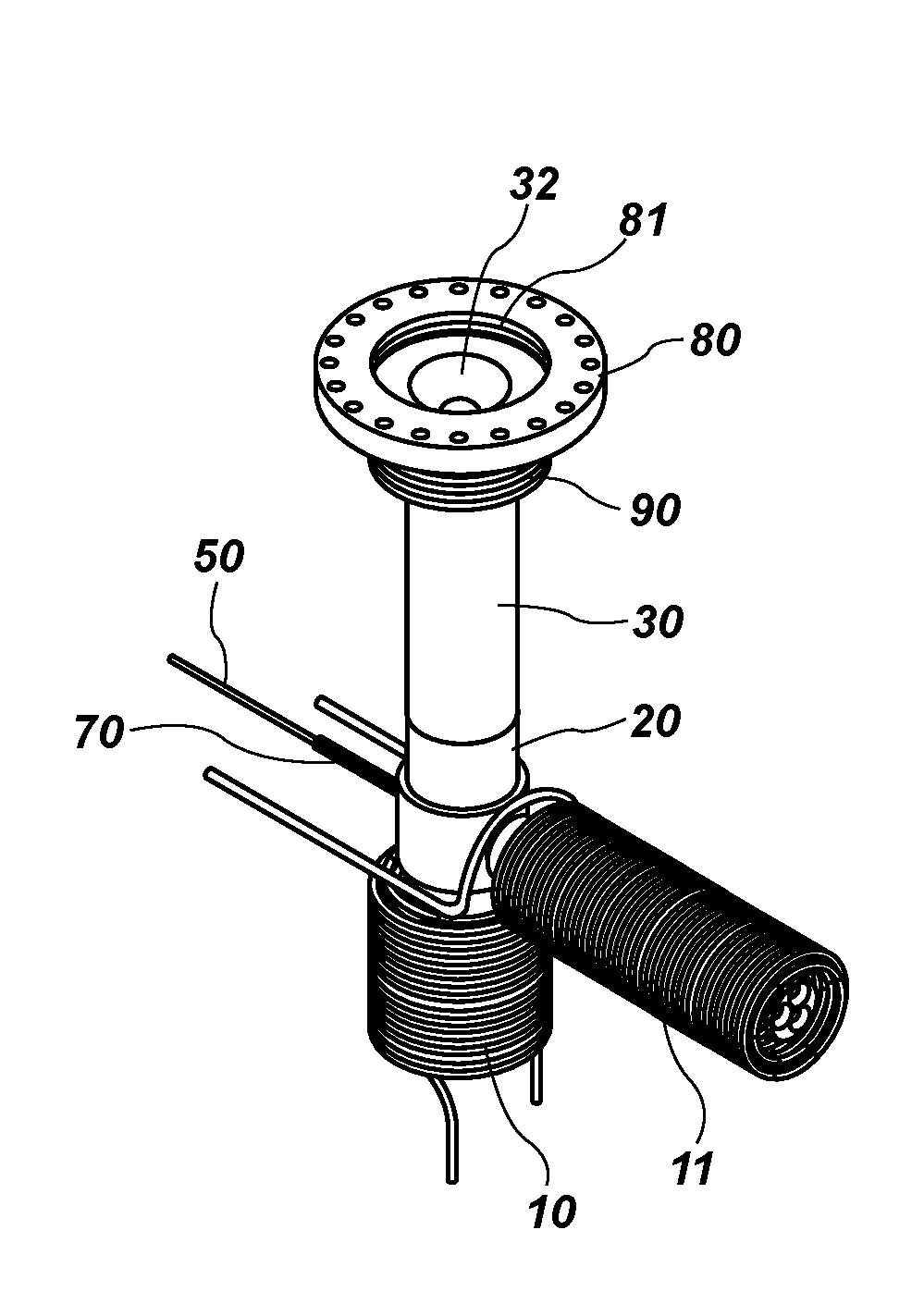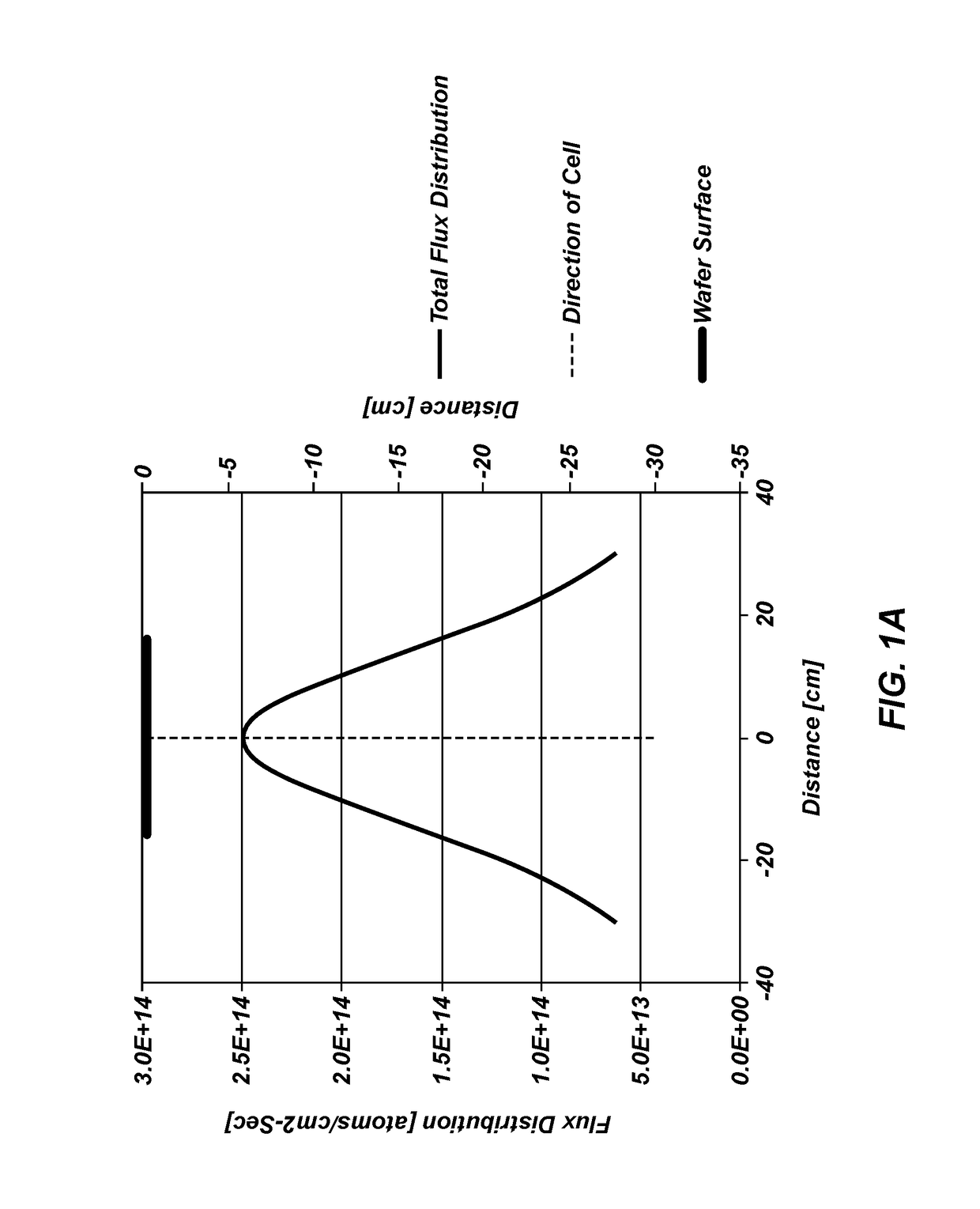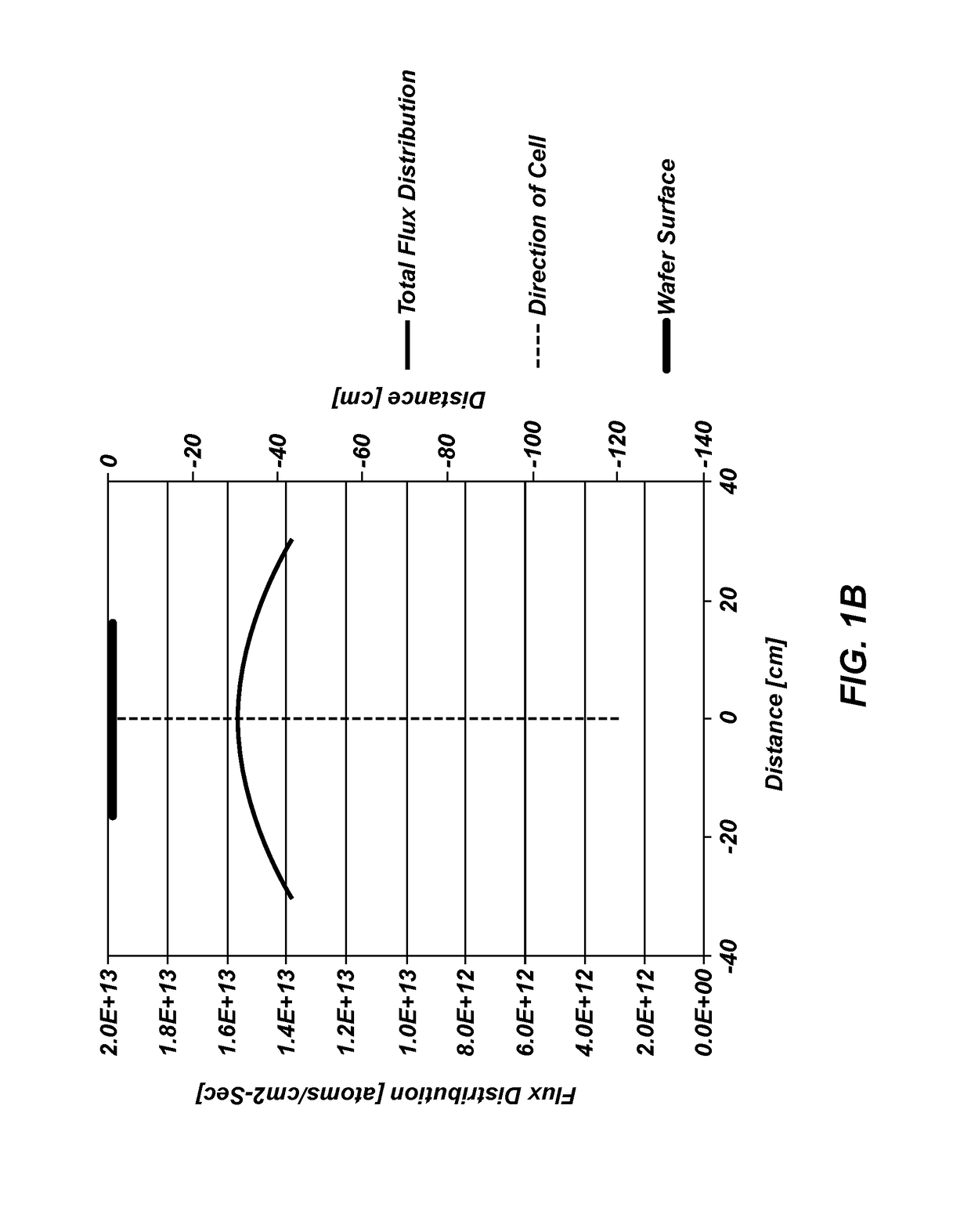Thus, if a high-speed pump is connected through a small opening (limited conductance) to a
vacuum chamber, the opening limits the overall conductance and, thus, the
throughput and achievable pressure.
Unfortunately, while slotting a female thread is necessary for allowing the trapped gas to escape, it also allows an opportunity for the liquid evaporate material to “wick” through the slot and escape the joint.
In any thin film deposition
system, but particularly in MBE, the upper
deposition rate is limited by the onset of “
spitting” from the effusion cell.
Spitting can result from
convection flows (sometimes inaccurately referred to as “boiling”) established in a heated melt, which increase in ferocity as temperature is raised, resulting in liberation of droplets of liquid that can reach the substrate and result in defects
ranging from
metal droplets to dried chemically reacted droplet alloys that in some applications are often described as “oval defects” for their identifying geometry.
Either of these mechanisms, or other similar mechanisms known in the art, can result in source
spitting that can incorporate defects in the deposited film.
These designs suffer from inefficient heat absorption, and limited temperature differential compared to the melt region providing only modest reduction of
spitting compared to standard
open cell designs.
In processes requiring high purity, such as deposition of
semiconductor material where one
impurity in approximately 100 trillion
semiconductor atoms is considered “impure,” this breaking of vacuum and subsequent
system contamination via H2O, CO, O2, CO2 and other contaminating gases found in the
atmosphere, causes an expensive and
time consuming “post-maintenance cleanup” cycle to be employed.
This is deemed as one of the primary industrial limitations of the MBE process and is the primary reason many manufacturers select competitive technologies instead of MBE.
In the select few sources that do not load materials through the same opening through which they evaporate the material, the design is such that breaking vacuum to load the materials is still required, resulting in similarly limited campaign length.
However, since the flux arriving at the substrate reduces by a factor of 1 / LSS2, where LSS is the substrate-to-source spacing, this common practice also reduces the deposition rates substantially.
Positive draft crucibles have been used to improve uniformity, but these have reduced capacity compared to straight wall crucibles and exhibit well-known long-term flux instabilities known as “depletion effects,” wherein the surface area of the materials being evaporated change as the material is depleted, changing the flux over time, even at a constant temperature.
All open-ended crucibles, whether positive draft (conical) or straight walled, exhibit some measure of long-term flux instabilities due to depletion effects and are prone to short-term flux instabilities when the external
shutter is opened or closed.
The deposited material can accumulate to such thicknesses as to cause
shutter actuation problems (sluggish or locked behavior) and can even touch the cold surfaces surrounding the
shutter, forming a “solidified material weld” between the shutter and the cold surfaces, preventing shutter actuation.
Closing an open shutter requires the shutter to reversely
traverse the path it traveled during its opening cycle, which is a slow and often unwieldy process.
However, even these
plunger valve methods of flux modulation require the same path to be reversely traversed, resulting in slow flux modulations similar to the external shutter configurations.
These methods of molecular flux interruption were designed to simply start and stop the beam occasionally and are known in the MBE field to produce difficulty when rapid, frequent shutter / valve actuations are required.
Most often, these impurities are in the form of undesirable
oxygen and carbon gases, primarily from heated metals that act as near infinite sources of these undesirable contaminant gases.
These resistive
metal filaments,
ceramic parts holding the resistive
metal filaments, and gas
trapping rolls of metal used to reflect heat and minimize the amount of heat escaping the effusion cell or substrate heater, however, can result in introduction of impurities into the evaporate flux.
Thus, all the elaborate cryoshields and gettering pumps, useful for scattered or desorbed gases, have little effect on lowering these gas concentrations before they encounter the growth substrates.
 Login to View More
Login to View More 


